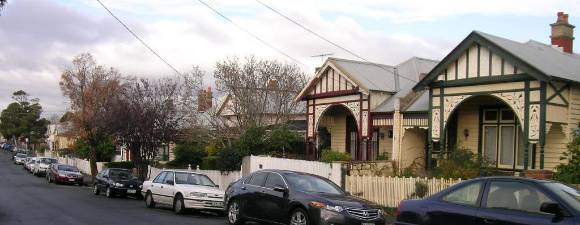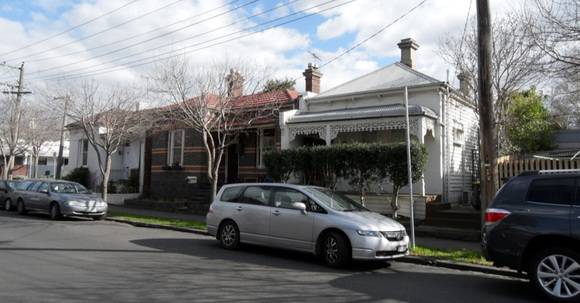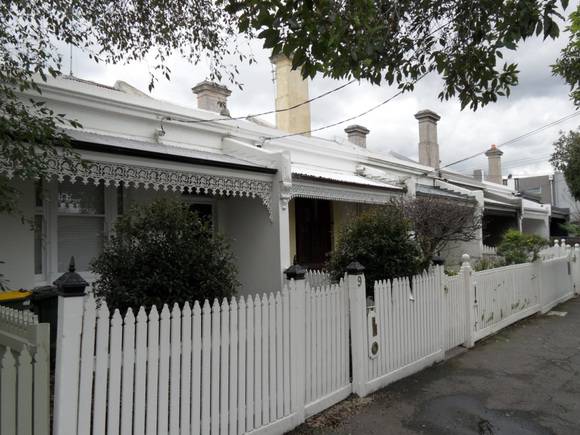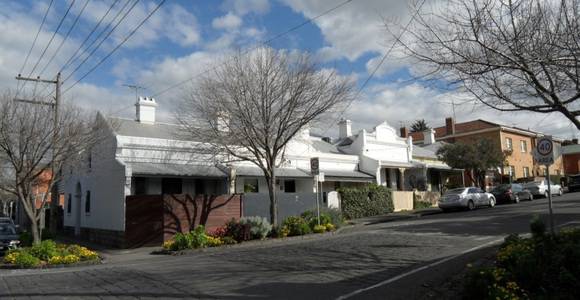| Back to search results » | Back to search page » |
|
Elm Grove Precinct
Other NameElm Grove Precinct, Richmond Location1-75 & 6-38 CHARLES STREET and ALL CHARLOTTE STREET and 345 CHURCH STREET and ALL ELM GROVE and ALL GEORGE STREET and 63-69 & 78-92 LYNDHURST STREET and MALLESON STREET and 47-103A & 60-80 MARY STREET and ALL PARKER STREET and 1-7, 9-19 & 2-16 WALL STREET RICHMOND, YARRA CITY LevelRecommended for Heritage Overlay |
|
Statement of Significance
What is significant? - The houses, flats and one factory constructed from c.1855 to c.1940, as shown on the precinct map. Non-original alterations and additions to the Individually Significant and Contributory buildings shown on the precinct map, the houses at 11 & 13 Brougham Street, 63 & 69 Charles Street, 22, 23, 25 & 27 Charlotte Street, 2-6 Wall Street, the flats at 26-28 Charlotte Street, and buildings constructed after c.1940 are Not Contributory. How is it significant? Why is it significant? The one factory in Mary Street is significant as a reminder of the mix of industrial and residential development that was so common in Richmond by World War Two. (Criterion A) The precinct is significant for its range of 19th and early 20th century housing, which has a high degree of intactness to the historic development phases and stands out from the surrounding area as a visually cohesive group of residential buildings. Within this context Malleson Street and the part of Lyndhurst Street south of Brougham Street is especially notable as an almost completely intact group of Edwardian Queen Anne houses constructed within a short time. The period housing is complemented by historic public realm elements such as bluestone kerb & channelling, bluestone laneways and the mature street trees in Elm Grove. (Criteria D & E)
The Elm Grove Precinct comprising 1-75 & 6-38 Charles Street, Charlotte Street (all), 345 Church Street, Elm Grove (all), George Street (all), 63-69 & 78-92 Lyndhurst Street, Malleson Street, 47-103A & 60-80 Mary Street, Parker Street (all) and 1-7, 9-19 & 2-16 Wall Street is significant. The following buildings and features contribute to the significance of the precinct:
- The historic housing form (pitched gabled or hipped roofs, one storey wall heights with a smaller amount of two storey dwellings), materials and detailing (walls of weatherboard or face brick or stucco, prominent brick or render chimneys, post-supported verandahs facing the street), and siting (small or no front and side setbacks).
- The consistency and intactness of the Edwardian house group in Malleson Street, and Lyndhurst Street south of Brougham Street.
- The mature street trees in Elm Grove.
- Traditional streetscape materials such as asphalt pathways and bluestone kerb and channel and laneways.
The Elm Grove Precinct is of local historic, architectural and aesthetic significance to the City of Yarra.
The precinct demonstrates the residential growth of Richmond from the mid nineteenth to the mid twentieth centuries, particularly the two development booms during the late 1880s and early 1890s and from 1905-15. It is also of note for the houses dating from c.1870s or earlier that are now rare and demonstrate the early development of Richmond. It also demonstrates how the elevated siting of parts of the precinct on Richmond Hill, particularly Elm Grove, were desirable residential areas and associated with influential persons until well into the 20th century. These included architects James Miller Robertson and William Salway and the Richmond builder and timber merchant Richard Fitzgerald. (Criterion A)
Group
Urban Area
Category
Mixed Use Precinct







